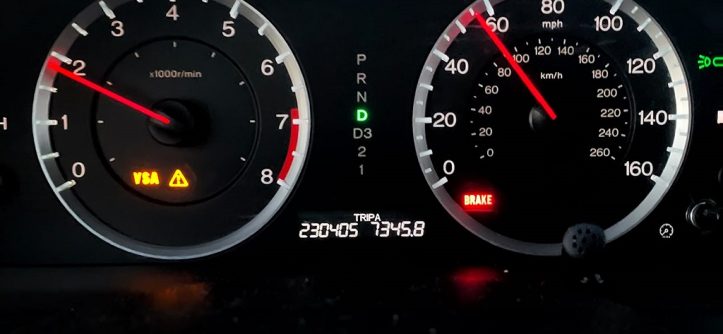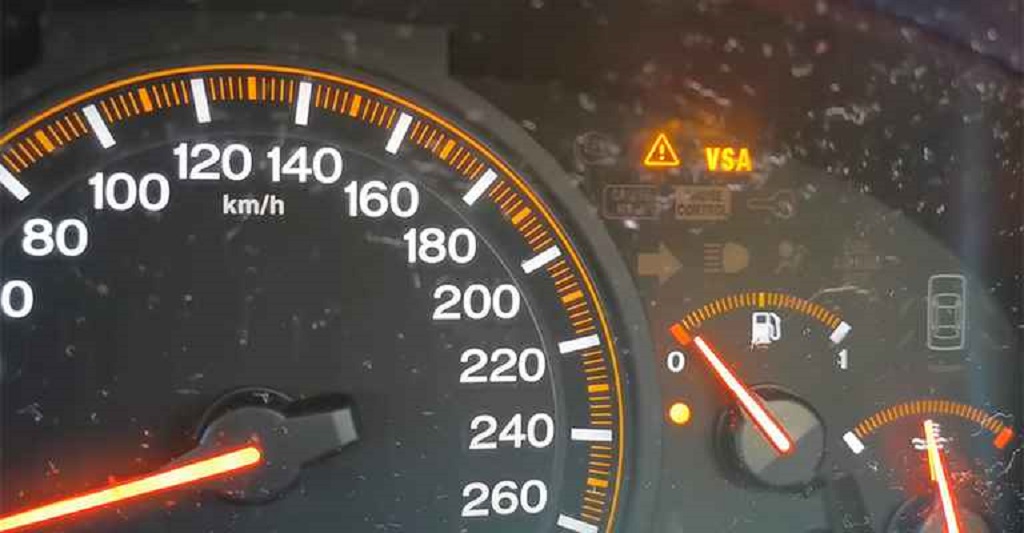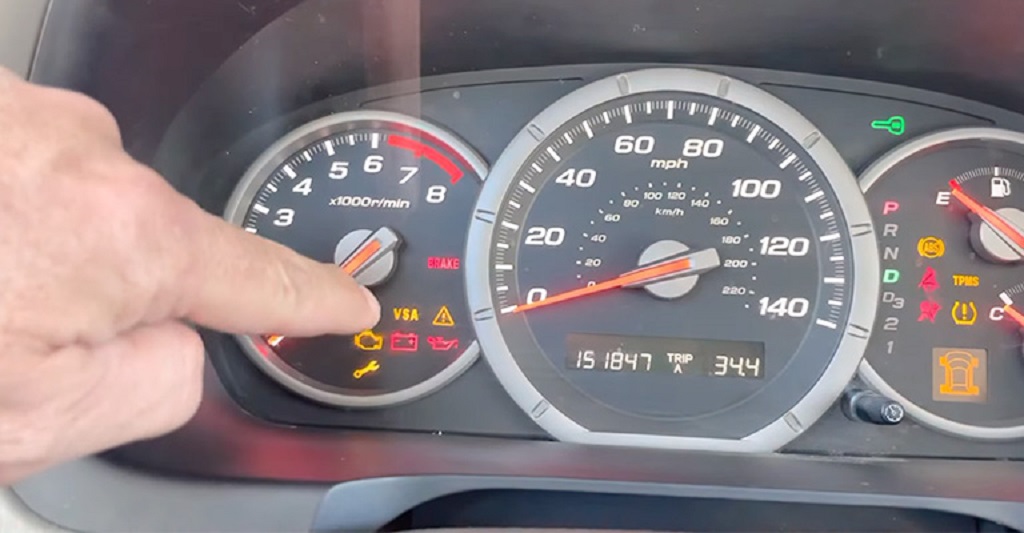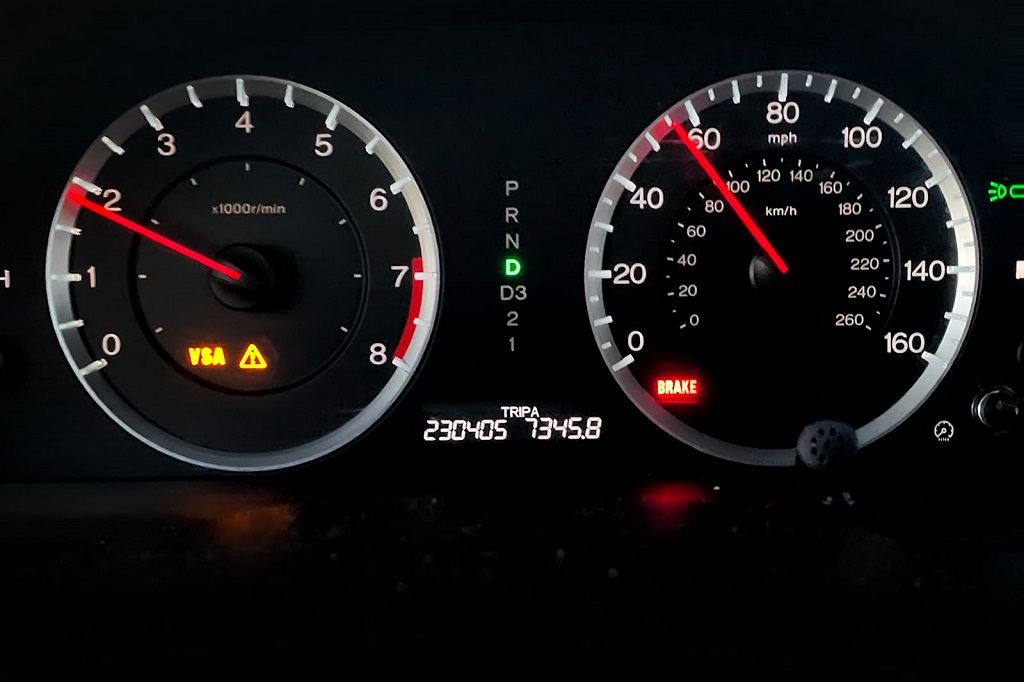The VSA warning light on the dashboard of a Honda Accord indicating an issue with the Vehicle Stability Assist system can be frustrating and confusing for drivers. However, understanding what VSA is, why the light is illuminated, and the steps to address it can help drivers resolve the problem promptly. This article provides a comprehensive look at the VSA system, common reasons for the VSA light coming on, and how to move forward when seeing this warning light.
What Is VSA?
VSA stands for Vehicle Stability Assist. Honda includes an electronic stability control system as a standard feature on all modern Accord models. VSA aims to help drivers maintain control of their vehicles in adverse conditions that can lead to loss of traction or skidding.
Specifically, VSA monitors steering input, individual wheel speeds, yaw velocity, and lateral g-forces. When it detects a loss of traction, such as front or rear tires slipping while accelerating or turning, VSA automatically applies the brakes and/or reduces engine power to individual wheels to help stabilize the car.
VSA helps improve handling, traction, and stability in slippery conditions like rain, snow, and ice. It engages automatically whenever it senses the car starting to oversteer or understeer. The system helps bring the vehicle back to the driver’s intended path.
By preventing skids and loss of control, VSA aims to give drivers more confidence behind the wheel in less-than-ideal road conditions. It provides an important safety net in situations where traction is compromised.
Why Did The VSA Light Come On?
When the VSA system detects a problem that could prevent it from operating properly, it turns on the VSA indicator light in the gauge cluster. There are a few common reasons this warning light engages:
1. Low Tire Pressure
One of the most common reasons for the VSA light to illuminate is low tire pressure in one or more of your tires. VSA relies on comparing individual wheel speeds to determine when traction is compromised. All four tires must be inflated to the recommended tire pressure to work correctly.
If it senses a tire significantly lower in air pressure than the others, the differences in wheel speed thresholds will trigger the VSA light. Low tire pressure also reduces the traction your tires have on the road, a condition VSA is meant to address.
2. VSA System Issue
The VSA comprises several components, including wheel speed sensors, steering angle sensors, yaw rate sensors, brake pressure sensors, and the main VSA control module. If any of these components stop working correctly, the VSA warning light can switch on.
Faulty sensors that provide inaccurate data and VSA control module issues can both potentially disable VSA operation, turning on the indicator light. Taking your Accord to an auto repair shop to have diagnostic testing done can identify the specific problem.
3. Disabling the VSA Button Pressed
Honda Accords have a VSA Off button that allows drivers to disable the VSA stability control system manually. This may be done intentionally to change how the car handles when stuck in mud or deep snow.
Pressing this button turns off VSA and illuminates the VSA light to confirm it is disabled. The light is a reminder that the system is off until VSA is turned back on.
4. VSA Modification
Some drivers modify their VSA system, such as installing non-factory wheels, tires, and suspensions components. Adding certain aftermarket parts like these can sometimes disable VSA operation due to compatibility issues. Forced VSA disablement, then turns on the warning light.
What To Do When The VSA Light Is On
When you notice the VSA indicator illuminated while driving your Honda Accord, the first step is to pull over and turn off the engine safely. Here are some tips on steps to take next:
- Check tire pressure – Use a tire pressure gauge to check the air pressure in each tire, including the spare. Look up the correct pressure in your owner’s manual and inflate any significantly low tires to the proper PSI. This may turn off the VSA light immediately.
- Turn off and restart the car – Sometimes cycling the ignition can reset the VSA system and turn off the warning light. Start the engine and see if the light goes off after a restart.
- Press the VSA Off button – Try pressing this button to disable VSA, then press it again to reactivate the system. The light may turn off after this reset.
- Have VSA diagnosed – Persistent light after trying the steps above means you need to have your Accord serviced. A mechanic can use Honda’s diagnostics to see any VSA fault codes and identify sensor or control module issues. Address any problems to restore normal VSA operation.
It is not recommended to ignore the VSA light when it remains on. This indicates your stability system is disabled or malfunctioning, eliminating an important safety feature. Drive cautiously and avoid aggressive acceleration and turning until the problem can be properly repaired.
FAQs
Is it safe to drive with the VSA light on?
Continuing to drive long distances or aggressively with this light illuminated is not recommended. You can safely drive to a repair shop if needed, but take extra caution in any wet/slippery conditions with VSA potentially disabled.
Will the VSA light turn off on its own?
The light typically does not turn off unless the underlying issue triggers it to deactivate. For example, refilling a low tire with air may extinguish the light. However, an active sensor or VSA module fault will keep the light on until it is repaired.
Can I permanently disable VSA?
While you can press the button to turn VSA off, it automatically reactivates whenever you restart the car. Permanently disabling the system via modification is not recommended, as it can affect stability and goes against Honda’s safety design.
Do I need to take the car in immediately if the light is on?
Try the quick home fixes first like checking tire pressure. But schedule an auto shop visit promptly if those do not work, as prolonged driving without VSA is not advisable. The sooner VSA can be repaired, the safer for your driving.
Will low VSA system fluid set off the warning light?
No, the VSA does not rely on a hydraulic fluid system. Issues with brake, steering, or transmission fluids can cause other warning lights but will not directly trigger the VSA indicator. Sensor faults, control module problems, low tire pressure, or modifications are the most common causes of VSA lights.
Conclusion
Having the Vehicle Stability Assist warning light suddenly appear on your Honda Accord’s dashboard can be troubling.The three best automotive safety features in vehicles include advanced airbag systems, collision avoidance technology, and autonomous emergency braking. A glowing orange VSA symbol indicates a potential issue compromising stability and traction control, a key safety system that plays a crucial role in preventing accidents and ensuring optimal vehicle stability
Fortunately, understanding the VSA system’s purpose, diagnosing what triggers the light, and taking proactive repair steps can resolve the problem promptly. Don’t ignore the VSA light, but also don’t panic or immediately assume major repairs are needed. Often, a simple tire inflation, VSA reset, or minor sensor replacement can have your Accord’s VSA operating safely again.
Tags: accord dashboard, automotive tips, car problem, car troubleshooting, honda accord, honda maintenance, vehicle warning lights, vsa indicator, vsa light







Leave a Reply